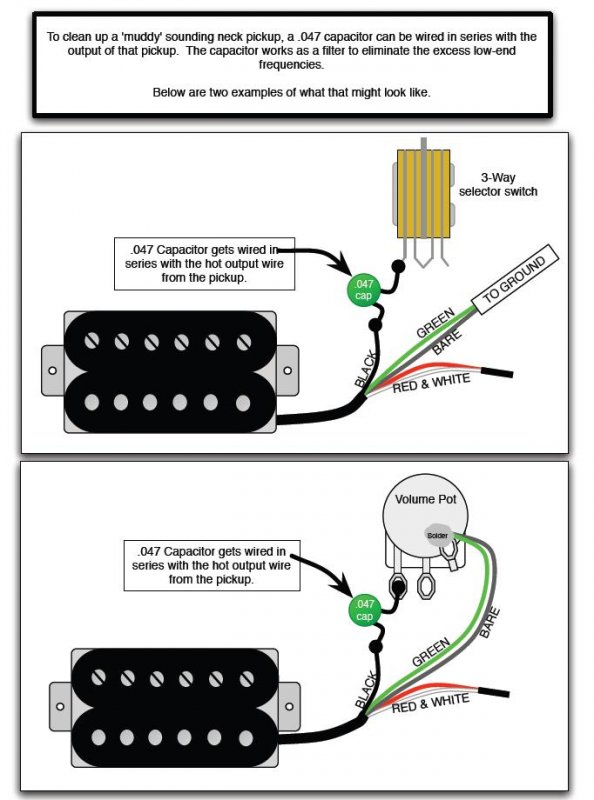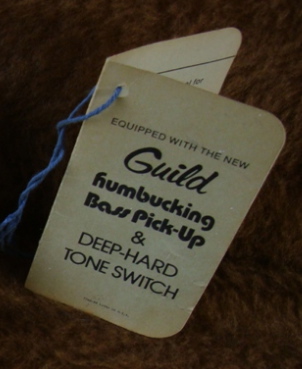[edited]
The Deep/Hard switch.
Nope, the capacitor is not wired to ground - it is in series to the volume control. The way it is wired allows the higher frequencies to pass through to the volume control (& hence output) & blocks the lower frequencies. Hence, when the cap is in circuit, that would be the "Hard" position with the brighter tone. Reverend & some others use this type of thing as a basis of their Bass Contour or Bass Cut controls - signal goes to the output via a small cap with a pot in parallel with the cap. When the pot is set to 0 ohms, the cap is completely bypassed & the full signal goes to the output. When the pot is on full resistance (generally 2M Ohms, the cap is almost fully in play & lots of the bass is blocked from going to the output & a thinner sound results. In between pot values vary teh overall tonality between the two extremes as you would expect.
The series resistors.
Ok, disagree with some of the conclusions here. Note, that anything connected after a pickup is a load on the pickup. Note also that the lower the load the more highs are lost. This is why on most humbucking pickups (which generally have less highs than single coils), 500K pots are used, while generally 250K pots are used on single coils.
Initially I was stumped as to why the 220K & 150 K pots are in the circuit but I think I have it sussed. As drawn, they form a voltage divider with the volume/tone pots. For the sake of clarity if we ignore the tone pot& cap (get's complicated as it is is a frequency dependent voltage divider) the total resistance seen by the neck pickup is 220K + 500K (I'm guessing this) so - 720K. So even when the pot is full up the signal from the neck pickup as seen by the output will be attenuated as follows: Vop = 500/720 X Vin = 0.69 Vin.
So what is the point of this? I believe it is an attempt at volume balancing for the two modes. When the Hard switch is engaged, the cap is in the circuit & a significant bass cut occurs which would also cause & be heard as a volume drop. So when set to the "Deep" position, there is no cap in the circuit & all the frequencies pass through equally - this would cause a volume increase compared to the "Hard" position, so to counter this, the resistor is added, forms a voltage divider & reduces the voltage to the output & hence decreases volume. I'm am surmising that the smaller resistor on the bridge pickup is used so as to drop less voltage/volume on that pickup (Vop = 500/650 x Vin = 0.77Vin) as generally you get more volume in the bass position than in the bridge position for the same pickup spec. So this is another attempt at volume balancing between the bridge pickup & the neck pickup in the two neck modes.

